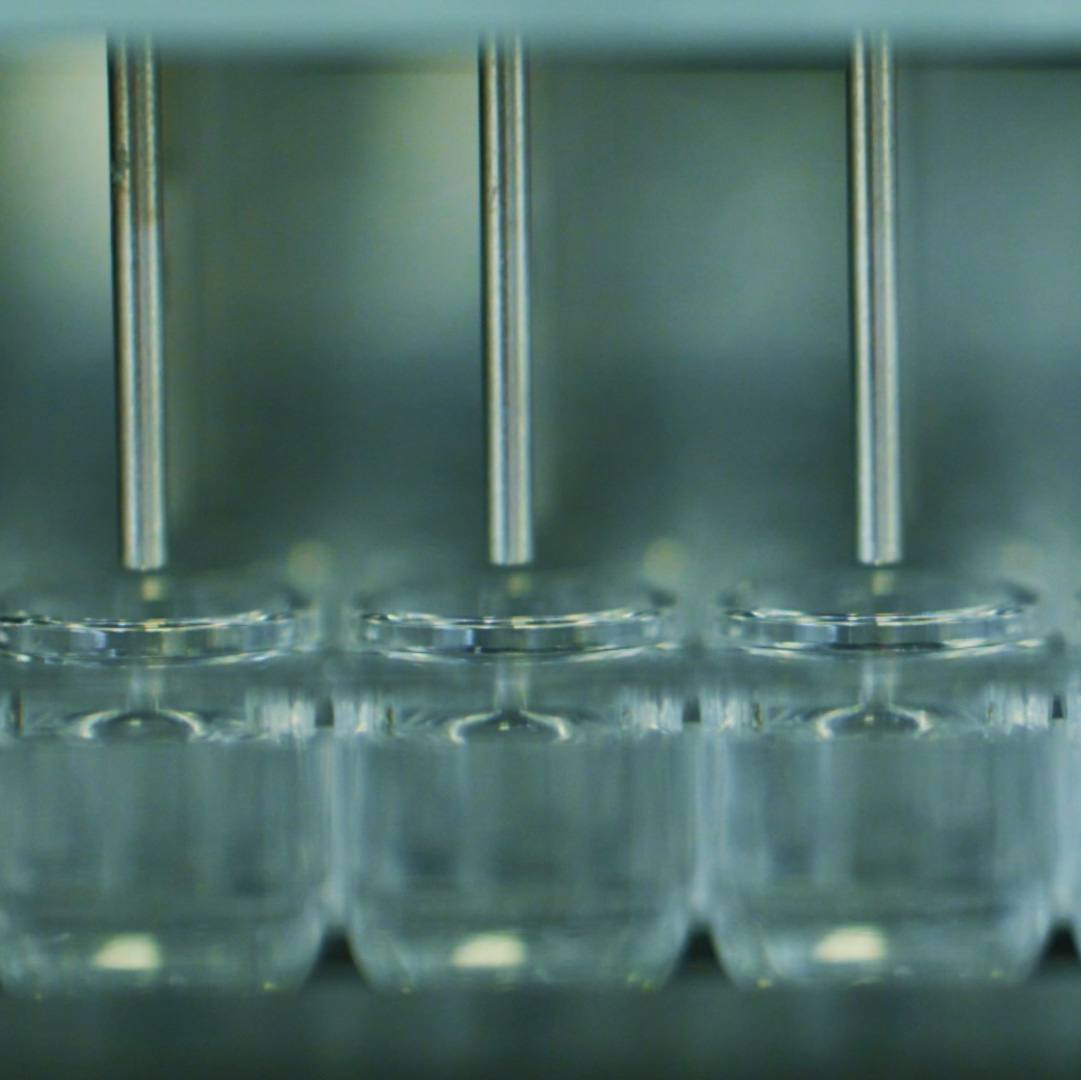-
Sharing Mayo Clinic: Making the workforce welcoming to all
Through an array of programs and initiatives, Mayo Clinic is developing a richly diverse workforce that reflects the different experiences and backgrounds of its patients.
Susan Miller always knew she wanted something more. More than her eighth grade education. More than working in a bakery and sewing quilts. More than the days that stretched out ahead, each one the same as the day before. So Miller made a decision. She would leave her family and her tiny Amish community.
Miller knew if she told her parents her plans, they would do whatever they could to make her stay. So one evening, she snuck away. She was just 17. She had no money, no Social Security card, no idea how to use a computer. But she had something stirring inside of her. "Ever since I was a little girl, I thought it would be so nice to be a nurse," she says.
Five years later, Miller is a patient care assistant at Mayo Clinic's Rochester campus, and she's on her way to becoming a licensed practical nurse. She hopes to eventually become a registered nurse and work in an emergency department. "I want to work where I won't know what will happen each day but will know that I have the skills to handle it," Miller says.
Miller's path to Mayo Clinic was not an easy one to travel. She doubts she would have made it at all without the help of Bridges to Healthcare, a collaborative program between Mayo Clinic and community education partners in Rochester, Minnesota. The program helps participants — many of them people of color or first-generation college students like Miller — overcome barriers to employment by providing academic support, help with job applications and other assistance.
"I go to every single Bridges graduation," says Guy Finne, director of Workforce Development in Human Resources at Mayo Clinic. "There's always a class speaker. They tell their stories, share the trials and tribulations they've had, the barriers they've faced. I've heard from refugees who have had soldiers doing harm to their families right in front of them."
And Finne has heard from people like Miller, who have made bold choices. "Talk about commitment," he says. "That's the kind of employee we want at Mayo Clinic."
Finne, who serves as Mayo's liaison to the program, says the partnership is one example of the institution's increasingly "intentional and deliberate" efforts to develop a diverse workforce — one that better reflects the vastly different experiences of patients who come to Mayo Clinic for care.
"Diversity is not something that's disconnected from our core mission and primary value," says Leon Clark, chair of Mayo Clinic's Department of Research Administration. "If we strive to provide the best care to every patient, every day, that literally means every patient that enters our doors. Delivering on our promise to patients requires understanding and cultural competency."
Clark says that understanding comes by way of training, education and having a diverse workforce that represents Mayo's patient base now and into the future.
A case for diversity and inclusion
Diversity recruitment and retention efforts are about more than doing the right thing says Lor Lee, director of Diversity and Inclusion at Mayo Clinic.
"This isn't just a nice thing to do. There's a business imperative for this work," Lor Lee says. "Demographics are changing. By 2050, half of the U.S. will be nonwhite. We already know there's a shortage of health care staff. If we can't recruit a diverse workforce and retain our talented staff, we'll have millions of dollars walking out the door."
Today, 26 percent of Mayo's physician and scientist staff, and 14 percent of allied health staff are people of color, compared with 25 percent of the U.S. population. In 2017, among Mayo's allied health staff who left the organization within the first year of employment, people of color voluntarily left Mayo 10 percent more than their white peers.
The reason these staff members most often cite for leaving? "They felt their work team itself did not welcome them," Finne says. Similarly, a 2015 survey revealed that 33 percent of Mayo Clinic staff does not feel that they can bring their whole selves to work.
"Having 'every brain in the game' provides us with the richness of perspective and experiences that can give Mayo Clinic a competitive advantage in the marketplace."
Barbara Jordan
"Our staff must be made to feel that their opinions matter and are welcome," Clark says. "Inclusion and engagement requires intentional effort to go out of one's way to invite colleagues to participate in something or share thoughts and ideas."
Mayo also has room to grow in its leadership ranks to reflect a diverse community. Among the top leadership roles at Mayo Clinic, there is a large gap in representation of women and people of color compared to what is represented in the communities the organization serves.
Barbara Jordan, administrator for the Office for Diversity in the Mayo Clinic College of Medicine and Science, says gaps like these mean Mayo Clinic is missing out on valuable additions to the team.
"Having 'every brain in the game' provides us with the richness of perspective and experiences that can give Mayo Clinic a competitive advantage in the marketplace," she says. "Diversity and inclusion are assets to our institution."
Where Mayo Clinic is headed
Mayo's Office of Diversity and Inclusion has established six goals to guide the organization in developing those assets:
- Provide high-quality, culturally appropriate care in a welcoming environment to all patients.
- Increase the diversity of Mayo Clinic patients.
- Improve inclusiveness and participation of diverse staff at all levels of the organization.
- Increase the proportion of women and minority students, faculty, administrators and staff where underrepresented.
- Increase the proportion of women and minorities in senior leadership.
- Identify and eliminate health disparities, and become a national leader in the science and promotion of health equity.
In addition to those broad goals, Mayo Clinic also has established these four areas of focus to improve workforce diversity and inclusion:
- Increase the diversity of Mayo's workforce, specifically among top leaders across the organization.
- Improve the retention of staff so there is no difference across any demographic group.
- Improve the culture of inclusion by creating tools and resources that all Mayo staff can use in their daily work.
- Increase the diversity of the future pipeline of health care workers.
Getting there
A number of efforts are in place to help achieve those goals. Bridges to Healthcare has helped Mayo Clinic recruit more than 150 allied health staff. Mayo Clinic College of Medicine and Science is attracting and recruiting diverse students in part through several programs targeting high-achieving, underrepresented students.
The William Worrall Mayo Scholars Program provides a campus visit and connects Mayo Clinic mentors to diverse college students whose Medical College Admission Test scores are in the 90th percentile. The Wilson Scholars Program offers similar support to promising medical students from diverse backgrounds. Around a quarter of participants from each program choose to come to Mayo Clinic for education or training, creating a valuable pipeline for future staff.
Project Search provides another staffing pipeline. The work-based educational program helps young adults with cognitive disabilities gain the skills needed to enter the workforce.
In 2016, Josh Lee, an operations supervisor for Mayo Medical Laboratories, volunteered to host a Project Search student for a short-term internship. But when two program graduates applied for permanent positions he was looking to fill, he says he was hesitant to interview them.
"I'd said yes to hosting an intern because it was just a 10-week rotation," Josh Lee says. Initially, he agreed to the interviews "to appease HR." But a conversation with Dawn Kirchner, a diversity recruitment specialist, changed his mindset. The candidates could do the job, Kirchner assured him.
"One hundred percent of my reservation about hiring Project Search participants was my own fear. Everybody deserves an opportunity."
Josh Lee
"Then she told me, 'Don't set limitations,'" he says. "At that moment, I realized I was standing in the way of a life-changing opportunity. I was going to be a roadblock."
Instead, Josh Lee opened a door by hiring Alex Steffl and Vaughn Chamberlain. He has since hired a third Project Search graduate, Tanner Petersen.
"Now I can't imagine a day without them," he says. "They're amazing individuals, and they do amazing work. Alex has qualified for every job in our area."
Josh Lee says the experience has made him a better, more creative manager — and a better, more compassionate human being.
"Before this, I'd had minimal contact with people with disabilities," he says. "One hundred percent of my reservation about hiring Project Search participants was my own fear. Everybody deserves an opportunity."
Reaching out, looking in
As Josh Lee discovered, the biggest barriers to inclusivity are often those that exist in people's minds. That's why Mayo offers unconscious bias training, as well as education around culture, diversity and inclusion. In addition, monthly "Conversations on Employee Experiences" give small groups of staff the opportunity to provide feedback to leaders around the topics of race, religion and other aspects of diversity.
Mayo Clinic also is working to ensure each department has a diversity leader tasked with communicating Mayo's policies and driving their work area's efforts.
"This work is about more than setting goals and creating policies," Lor Lee says. "We also need leaders to uphold them. This is about organizational change."
"We only know what we've experienced, and when we expose ourselves to all different kinds of folks with different values, it opens the door to new understanding that is pretty powerful. It really opens your eyes."
Guy Finne
Mayo Employee Resource Groups, or MERGs, offer another way to broaden perspectives. The staff-organized groups are formed around common aspects of diversity, from traditional dimensions such as ethnicity, age or gender to groups such as veterans, single and working parents, or people with disabilities. A variety of groups has formed on each Mayo Clinic campus, and the groups are open to all staff. Guy Finne has experienced their value firsthand.
"What has impacted me more than anything is to sit with someone who does not look like me, talk like me or think like me, and to share stories," he says. "We only know what we've experienced, and when we expose ourselves to all different kinds of folks with different values, it opens the door to new understanding that is pretty powerful. It really opens your eyes."
HELPFUL LINKS
- Learn about Mayo Clinic's Office of Diversity and Inclusion.
- Watch a video about Project Search.
- Explore Mayo Clinic.
- Request an appointment.
Related Articles








